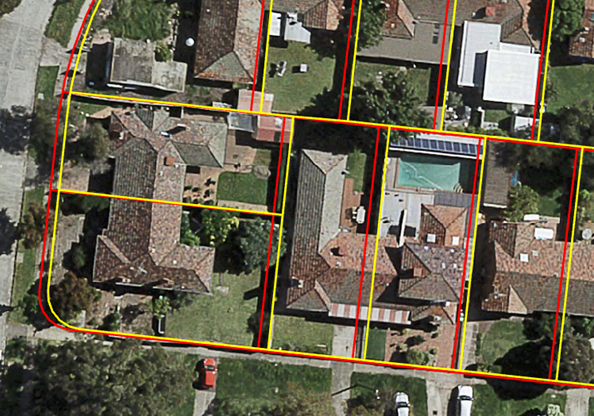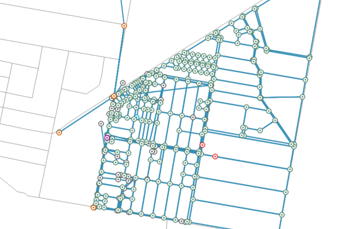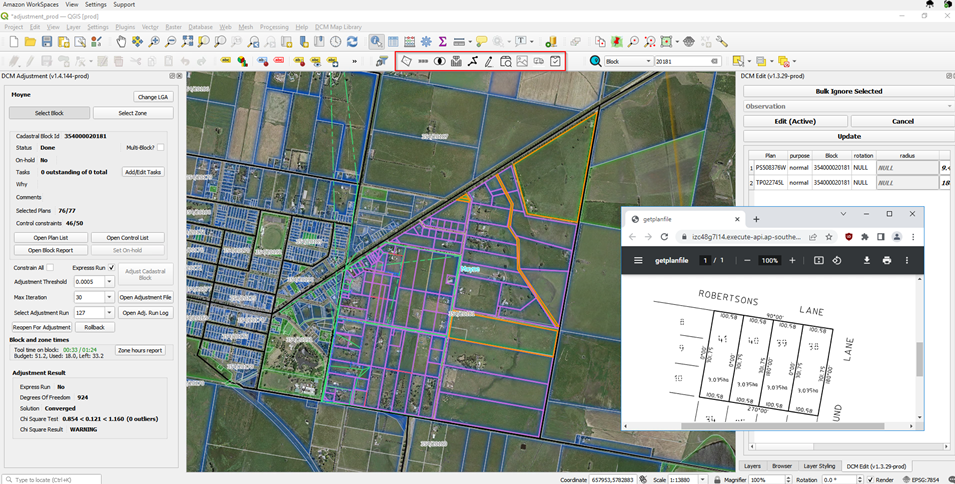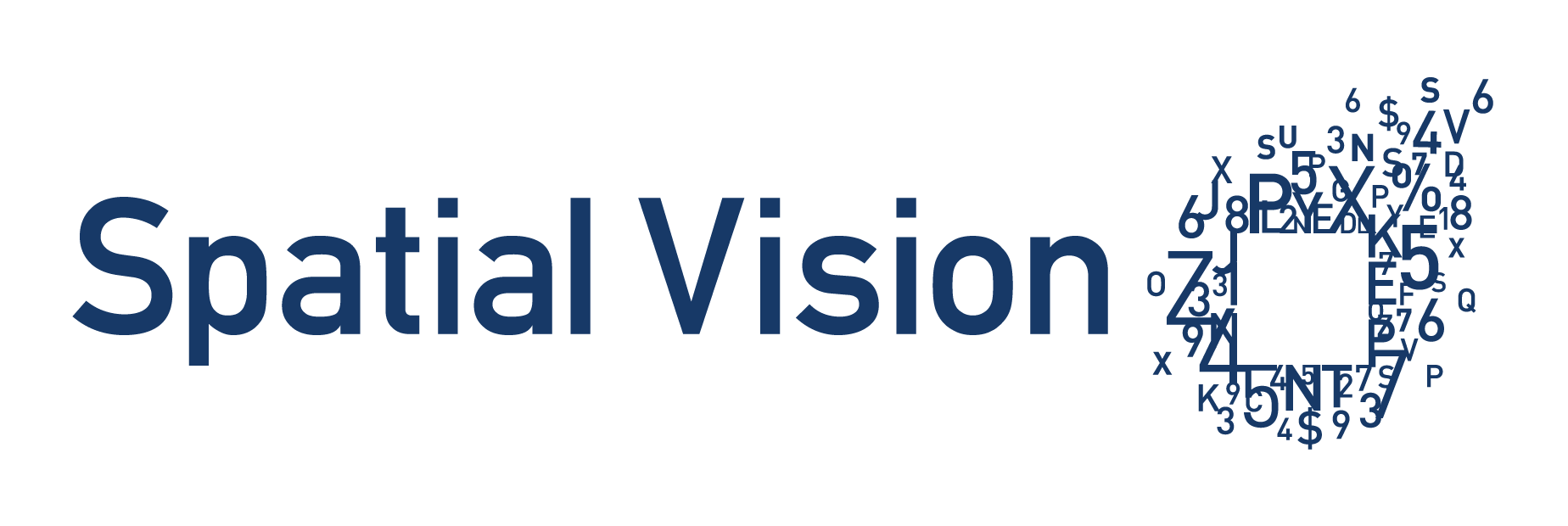The development of housing, transport, and environmental and social infrastructure to ensure our sustained economic resilience, liveability and well-being rely on reliable and accurate mapping of land ownership.
Digital cadastral mapping involves the spatial representation of property boundaries.
Accurate cadastral mapping is vital for confident planning of services and assets for communities, infrastructure, utilities, telecommunications and transport. This provides a foundation for digital twins and smart city data services.
Without accurate cadastral mapping, managing land use, understanding land ownership and planning for the future can be challenging.
Cadastral improvement programs are often challenged by the high levels of technical complexity, the significant cost and constrained nature of some proprietary solutions, as well as the need for rigorous and efficient automated (or semi-automated) processes.
In many cases, achieving improvement to the cadastral fabric can seem like an intractable problem – where do you start?
Our Digital Cadastre Transformation Services
Spatial Vision has the experience and tools to assist you in:
- Assessment of size and nature of project.
- Formulation of business case to secure project funding.
- Stakeholder engagement to elicit requirements for data and services.
- Technical problem-solving in relation to input data requirements, adjustment workflow, and solution selection.
- Supply and configuration of our open-sourced based digital Cadastre Adjustment Toolkit.
- System maintenance and technical support.
- Project governance and policy support.

Outcomes
- A clear plan and business case for digital enhancement of your cadastral mapping.
- Technical methodology and architecture for transformation.
- Large-scale delivery of cadastral adjustments from LandXML format plan and survey data to create an adjusted, integrated cadastral fabric.
- Future-ready for automation and rapid updates with LandXML format plans.
A digitally transformed cadastre will lead to more efficient land registration processes, protection of landholder rights, improved land use planning and accurate land tax calculations.

Case Study
The Government of Victoria’s Digital Cadastre Modernisation (DCM) project is a key vehicle for improving foundational spatial data. This world-leading initiative is digitally transforming Victoria’s cadastral fabric and Vicmap product suite, facilitating timely updates of key authoritative datasets.
The DCM is set to contribute to accelerating digital engineering practices and future-leading concepts including smart cities and digital twins.
Spatial Vision has developed an open-source system to deliver the adjustment phase of this project, where we have adjusted over 3.1 million parcels.

Talk to us about how we can assist you in progressing your digital cadastral improvement project.
We would love to demonstrate to you our proven open-source digital Cadastral Adjustment Toolkit.
Digital Cadastral Adjustment Toolkit
Our open-source toolkit comprises a cloud-based spatial data store, a highly customised QGIS operator interface, and a suite of Python and PostGIS-based tools and processes. The highly regarded and widely used DynAdjust open-source least squares adjustment engine is at the core of the system.
Our Toolkit provides the capability to undertake cadastral adjustments from LandXML format plan and survey data to create an adjusted and fully integrated cadastral fabric.

LINKS
LATEST NEWS
 Getting the most out of your GIS strategy & investmentJuly 24, 2024 - 7:10 pm
Getting the most out of your GIS strategy & investmentJuly 24, 2024 - 7:10 pm Climate Change & Homelessness: Understanding the ConnectionJuly 24, 2024 - 6:36 pm
Climate Change & Homelessness: Understanding the ConnectionJuly 24, 2024 - 6:36 pm Navigating the complexity of geoscience data analysisJuly 24, 2024 - 5:14 pm
Navigating the complexity of geoscience data analysisJuly 24, 2024 - 5:14 pm Meet Jarryd Hunter Manager of Enterprise Spatial SolutionsJuly 24, 2024 - 1:54 pm
Meet Jarryd Hunter Manager of Enterprise Spatial SolutionsJuly 24, 2024 - 1:54 pm
CONTACT
We are based in Melbourne and provide services and products throughout Australia, New Zealand and other overseas countries.
Telephone Enquiries
0498 800 300
International Enquiries
+61 498 800 300
Head Office
Level 8, 575 Bourke Street
Melbourne 3000
Australia


